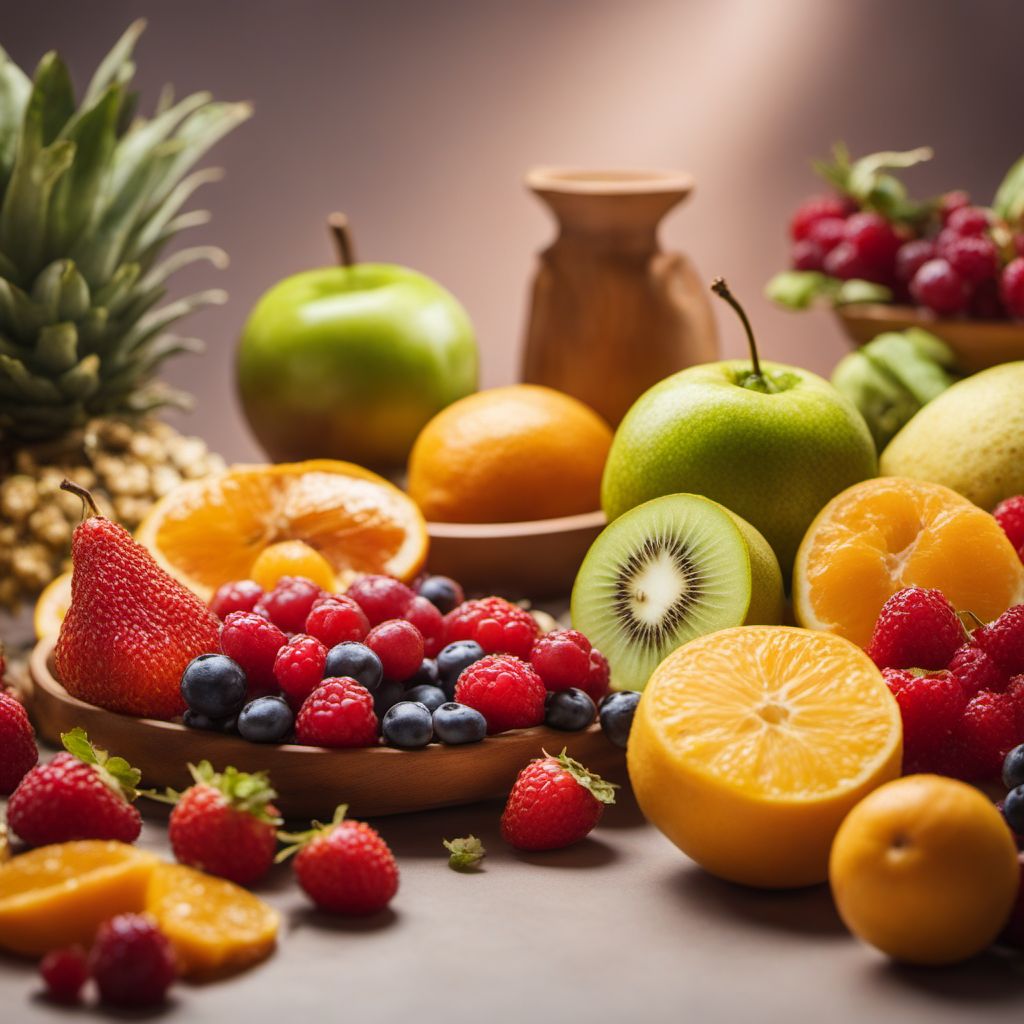
Ingredient
Fruit and primary derivatives thereof
The Essence of Nature's Sweetness
Fruit and primary derivatives thereof encompass a wide variety of fruits, including apples, oranges, berries, melons, and more. These ingredients are known for their natural sweetness, juiciness, and vibrant colors. They can be consumed as a healthy snack, used in salads, desserts, smoothies, or incorporated into savory dishes to add a touch of sweetness. Fruit and its derivatives are cherished for their refreshing taste and nutritional benefits.
Origins and history
Fruits have been a part of human diets since ancient times, with evidence of their consumption dating back thousands of years. Different fruits have their own unique origins and cultural significance, often tied to specific regions or countries. Throughout history, fruits have been celebrated for their abundance, flavors, and medicinal properties. Today, they continue to be an integral part of global cuisine, enjoyed in various forms and preparations.
Nutritional information
Fruit and primary derivatives thereof are packed with essential vitamins, minerals, and dietary fiber. They are low in calories and fat, making them a healthy choice for snacking or incorporating into meals. Fruits are also a great source of antioxidants, which help protect the body against oxidative stress and inflammation. The nutritional content of fruits may vary, so it is beneficial to consume a variety of fruits to obtain a wide range of nutrients.
Allergens
Fruit and primary derivatives thereof are generally not associated with common allergens. However, individuals with specific fruit allergies, such as citrus or berries, should exercise caution and avoid consuming or using those particular fruits.
How to select
When selecting fruits, it is important to consider their ripeness, firmness, and overall condition. Look for fruits that are firm but yield slightly to gentle pressure, indicating ripeness. Avoid fruits with bruises, mold, or signs of decay. The aroma of the fruit should be pleasant and characteristic of its variety. For processed fruit derivatives, such as canned or frozen fruits, check the packaging for any added sugars or preservatives.
Storage recommendations
To maintain the freshness and quality of fruits, it is best to store them in a cool and dry place, away from direct sunlight. Some fruits, such as berries, are more delicate and should be refrigerated to prolong their shelf life. It is advisable to store fruits separately to prevent them from releasing ethylene gas, which can accelerate the ripening process. For processed fruit derivatives, follow the storage instructions on the packaging for optimal freshness.
How to produce
Growing fruits at home can be a rewarding experience, especially for those with access to a garden or outdoor space. Many fruit trees and bushes can be cultivated with proper care and maintenance. However, it is important to consider the specific requirements of each fruit variety, such as sunlight, soil conditions, and climate. Alternatively, individuals can also grow smaller fruits, such as berries or potted citrus trees, indoors or on balconies.
Preparation tips
Fruits can be enjoyed in their natural form, sliced, or diced for a refreshing snack. They can also be used in various culinary applications, such as fruit salads, smoothies, jams, pies, tarts, or as toppings for yogurt and cereal. Fruits can be grilled, roasted, or caramelized to enhance their natural sweetness. They can also be incorporated into savory dishes, such as salads, salsas, or sauces, to add a touch of brightness and balance. Experiment with different fruit combinations to create unique flavor profiles.
Culinary uses
Fruits and their primary derivatives are widely used in culinary applications around the world. They are essential ingredients in desserts, pastries, beverages, and savory dishes. From tropical fruits in Southeast Asian cuisine to citrus fruits in Mediterranean dishes, fruits are celebrated for their versatility and ability to enhance the taste of various cuisines.

